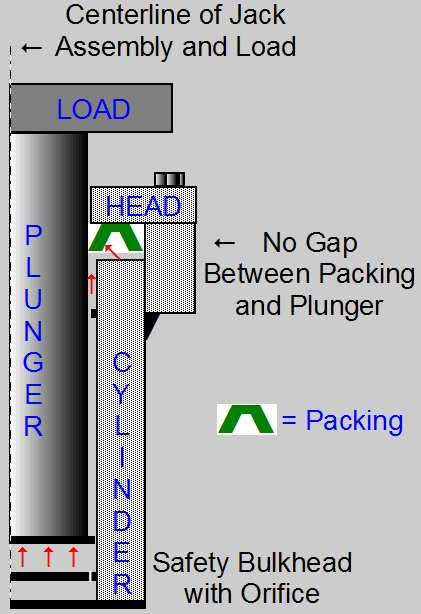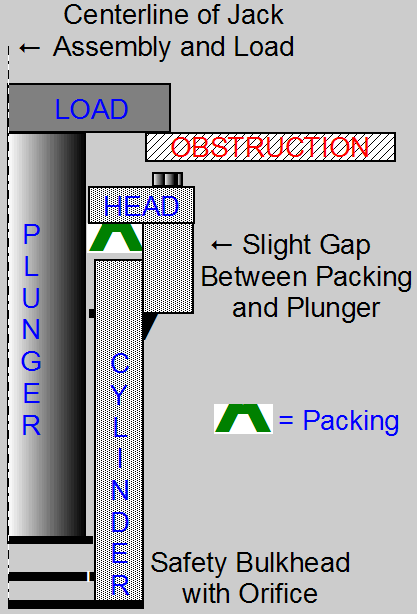

CODE UPDATE

Update #12 Pressure Switch (3.26.8)
Pressure switches are relatively easy to install, wire-up, and inspect but what are they actually defending against?
3.26.8 - "When cylinders are installed with the top of the cylinder above the top of the storage tank, a pressure switch shall be provided in the line between the cylinder and the valve, which shall be activated by the loss of positive pressure at the top of the cylinder. The switch shall prevent automatic door opening and the operation of the lowering valve or valves. The door(s) shall be permitted to open by operation of the in-car open button, when the car is within the unlocking zone." Pressure switches are almost always installed on holeless installations, however, "inground" cylinders installed with the top of the cylinder above the top of the storage tank would require a pressure switch as well. On the other hand, a holeless installation with the machine room at an upper landing would not require a pressure switch as long as the top of the storage tank is above the top of the cylinder.
How does a loss of positive pressure occur in an elevator hydraulic system? The following image depicts a properly working direct-acting hydraulic jack assembly. Some of the parts required for a properly designed jack assembly have been omitted for clarity. (More parts are generally required in the region of the packing head - for example, a lantern bearing, wiper ring, lantern ring, spacer, bearing ring etc.) I am only trying to demonstrate the actions of the packing. As you can see the lip of the packing is forced against the plunger due to the pressure of the hydraulic oil as the car goes up, down, or is stationary. (Shown as red arrows.)

Section Through Jack Assembly and Load
~ Positive Pressure In System ~
The following image illustrates a jack assembly that has "hung-up". The reason is not important but you can visualize a car "stuck" in the rails after an earthquake or some other damage to the hoistway enclosure which might prevent the downward travel of the elevator. The packing seal could relax enough to allow the entrance of air and the return of oil to the storage tank if the top of the cylinder head is above the top of the storage tank and the down valve is allowed to remain in the open position. Most seals are designed to keep high-pressure oil in and are not designed to keep air out. As soon as the pressure switch senses a loss of pressure in the system between the cylinder and the valve(s) it mechanically releases a set of contacts which alert the controller to the emergency. The down valve(s) should close because of this signal. According to Interpretation #84-97 - October 31, 1984 (A17 Elevator and Escalator Committee) "Experiments have shown that present seals are not effective in maintaining a vacuum in the cylinder." Closing the down valve(s) will maintain the column of oil necessary to support the plunger in the cylinder in the event the obstruction is suddenly removed.

Section Through Jack Assembly and Load
~ Loss of Positive Pressure In System ~
To test the pressure switch the inspector's manual suggests that you place the car at other than the bottom landing and remove one of the leads to the pressure switch. Call the car down. The car should not move. To check the mechanical portion of the switch attach an ohmmeter across the pressure switch contacts and lower the car onto the buffer(s). The contacts should open once the car comes to rest on the buffer(s).
I usually check the pressure switch after all of the weight testing is completed and the car is empty. I use the following procedure. I have the technician send the car to the top landing. After the car arrives at the top landing he calls it to the bottom landing. Once the maximum down speed is obtained, I have him slowly close the machine room shutoff valve to simulate the car "hanging-up" in the hoistway. As he is performing these procedures I place a steel rule against the down solenoid core(s). If current is flowing through the coil(s) the steel rule will vibrate at a set frequency - usually 60 hertz (for AC coils). As soon as the pressure switch releases its contacts the down solenoid coil(s) should lose their feed and the valves could close under normal operating conditions. The steel rule will stop vibrating when the pressure switch contacts open. I think this adequately checks the operation of the mechanical as well as the electrical portion of the pressure switch without having to remove any wiring.
![]()
![]()
![]()
 E-mail Bob Desnoyers with your pressure switch comments
E-mail Bob Desnoyers with your pressure switch comments 
Welcome/Contact ![]() Résumé
Résumé ![]() Elevator Utilities
Elevator Utilities ![]() Hydraulic Utilities
Hydraulic Utilities
Electric Utilities ![]() Odds & Ends
Odds & Ends ![]() Code Updates
Code Updates ![]() Testimonials
Testimonials
